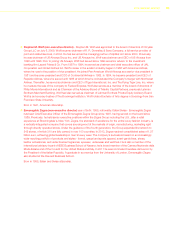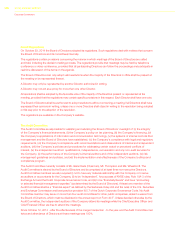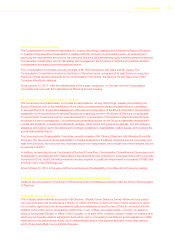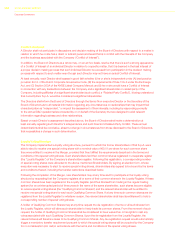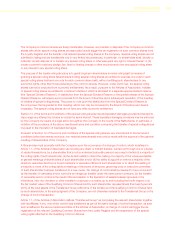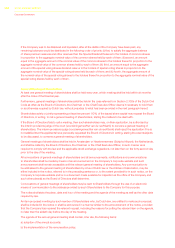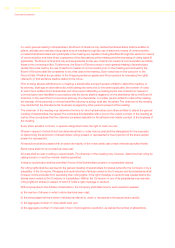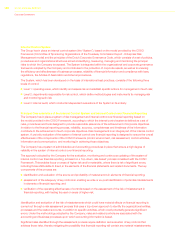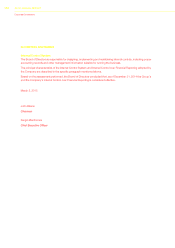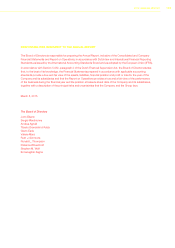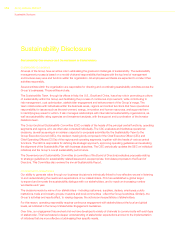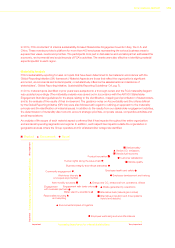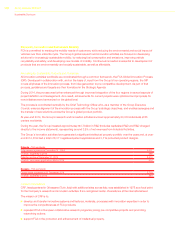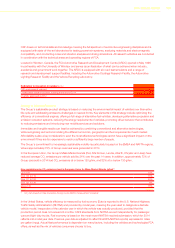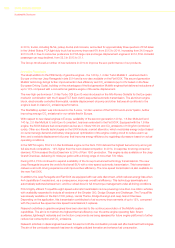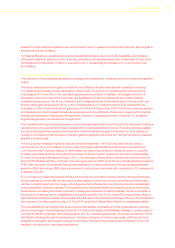Chrysler 2014 Annual Report Download - page 111
Download and view the complete annual report
Please find page 111 of the 2014 Chrysler annual report below. You can navigate through the pages in the report by either clicking on the pages listed below, or by using the keyword search tool below to find specific information within the annual report.
2014 | ANNUAL REPORT 109
In accordance with international best practices, the Group has two principal types of control in place:
controls that operate at Group or subsidiary level, such as delegation of authorities and responsibilities, separation
of duties, and assignment of access rights for IT systems; and
controls that operate at process level, such as authorizations, reconciliations, verification of consistencies, etc.
This category includes controls for operating processes, controls for closing processes and cross-sector controls
carried out by captive service providers. These controls can be preventive (i.e., designed to prevent errors or fraud
that could result in misstatements in financial reporting) or detective (i.e., designed to reveal errors or fraud that have
already occurred). They may also be defined as manual or automatic, such as application-based controls relating to
the technical characteristics and configuration of IT systems supporting business activities.
An assessment of the design and operating effectiveness of key controls is carried out through tests performed by
internal audit functions, both at group and subsidiary level, using sampling techniques recognized as best practices
internationally. Internal Audit also conducts a qualitative review of the tests performed by subsidiary companies.
The assessment of the controls may require the definition of compensating controls and plans for remediation
and improvement. The results of monitoring are subject to periodic review by the manager responsible for of the
Company’s financial reporting and communicated by him to senior management and to the Audit Committee (which in
turn reports to the Board of Directors).
Code of Conduct
The Company and all its subsidiaries refer to the principles contained in the Fiat S.p.A. code of conduct (the “Code of
Conduct”) and related Guidelines until approval of the new Code of Conduct by the Board of Directors.
The latest version of the Code of Conduct, a revision of the 2003 version, took effect in February 2010. The Code
of Conduct represents a set of values recognized, adhered to and promoted by the Group which understands that
conduct based on the principles of diligence, integrity and fairness is an important driver of social and economic
development.
The Code of Conduct is a pillar of the governance system which regulates the decision-making processes and
operating approach of the Group and its employees in the interests of stakeholders. The Code of Conduct amplifies
aspects of conduct related to the economic, social and environmental dimensions, underscoring the importance of
dialog with stakeholders. Explicit reference is made to the UN’s Universal Declaration on Human Rights, the principal
Conventions of the International Labor Organization (ILO), the OECD Guidelines for Multinational Enterprises and
the U.S. Foreign Corrupt Practices Act (FCPA). The Code of Conduct was amended to include specific guidelines
relating to: the Environment, Health and Safety, Business Ethics and Anti-corruption, Suppliers, Human Resource
Management, Respect of Human Rights, Conflicts of Interest, Community Investment, Data Privacy and Use of IT and
Communications Equipment.
In May 2014, the Code of Conduct was updated to reinforce the principles regarding “Antitrust” and “Export controls”
regulations and two new related Guidelines also entered into force. The Code of Conduct applies to all Directors,
employees of Group companies and other individuals or companies that act in the name and on behalf of one or more
Group companies.
The Company promotes adoption of the Code of Conduct as a best practice standard of business conduct by
partners, suppliers, consultants, agents, dealers and others with whom it has a long-term relationship. In fact, Group
contracts worldwide include specific clauses relating to recognition and adherence to the principles underlying the
Code of Conduct and related guidelines, as well as compliance with local regulations, particularly those related to
corruption, money-laundering, terrorism and other crimes constituting liability for legal persons.
The Code of Conduct is available on the Investors section (Fiat S.p.A. Archive) of the Group’s website.


